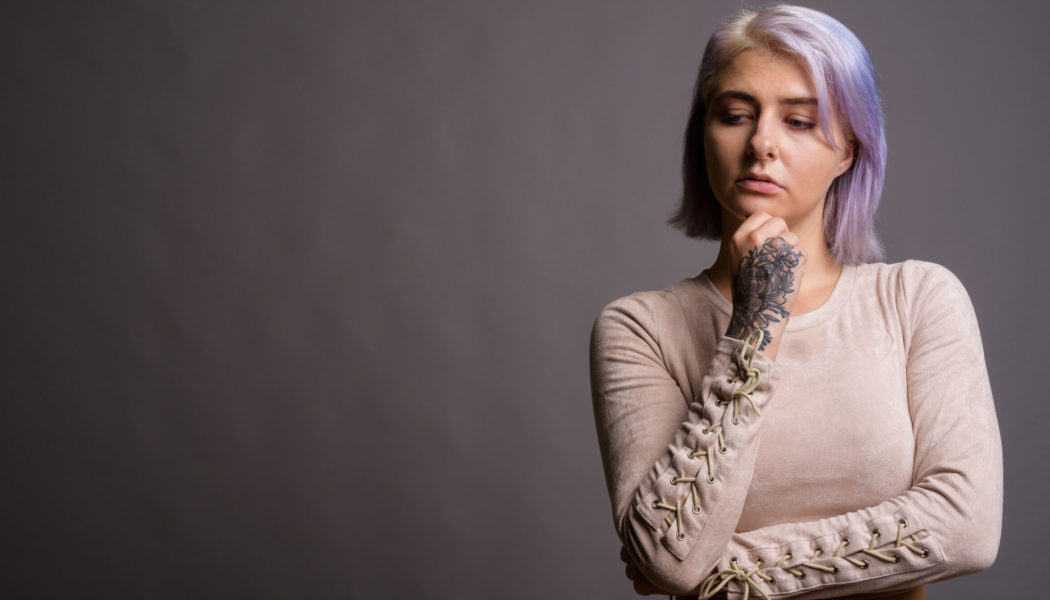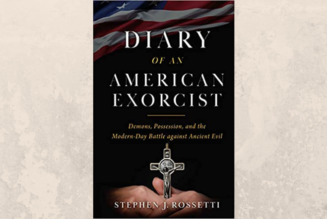
Almost 30% of Generation Z women identify as LGBTQ, according to a new Gallup survey.
Could that possibly be true?
Well, the Gallup survey, which also found that 22% of Gen Z overall identifies as LGBTQ, is no outlier. In recent years, data has clearly shown a rising number of Americans identify as LGBTQ, in no small part driven by an enormous percentage of Gen Zers who identify that way.
A survey released in January by the Public Religion Research Institute found that 28% of Gen Zers consider themselves LGBTQ. Meanwhile, among high schoolers in 2021, only 74% said they considered themselves straight, according to a study released last year by the Centers for Disease Control and Prevention.
What is driving this huge surge?
One possibility is societal acceptance. Same-sex marriage was legalized nationwide by the Supreme Court in 2015, the same year former Olympian and reality TV star Bruce Jenner announced that he now identified as a woman and wanted to be known as Caitlyn.
For Gen Z adults, which Gallup considers those 18 to 26, their youth was in an era of rapid change about LGBT views.
Since 2012, more Americans than not have favored the legality of same-sex marriage, according to Gallup. Since 2009, more Americans than not have said they believe that gay and lesbian relationships are moral. Even now, while 55% of Americans say they believe it is immoral to change one’s gender, as Gallup phrases it, a strong minority (43%) says they think it is moral to do so.
But widespread societal acceptance doesn’t seem to have so drastically affected other generations. Among millennials, about 10% say they identify as LGBTQ. That number drops to 4.5% for Gen X, 2.3% for baby boomers, and 1.1% for the Silent Generation.
This disparity is curious, and raises questions about the born-that-way argument about the innateness of LGBTQ identity. Wouldn’t Americans who had been hiding their identity now want to reveal it in light of current social views?
HBO’s Bill Maher, no conservative, came under fire in 2022 when he reacted to a similar Gallup poll by commenting that people may be identifying as LGBTQ to be “trendy.” Eric Kaufmann, now a professor of politics at England’s University of Buckingham, tweeted that Maher was right to say that identity was “shaped by social trends.”
[embedded content]
Kaufmann’s deep dive into the data on young adults and LGBTQ identification showed several interesting points.
First, looking at Americans under 30 in the General Social Survey, Kaufmann found that although 16% of them identified as LGBTQ, only 8.6% had engaged in same-sex behavior. “[I]n 2021, 6 in 10 young female LGBT identifiers and nearly 4 in 10 male LGBT young people only had partners of the opposite sex in the previous 12 months,” Kaufmann wrote in a 2022 report for the Center for the Study of Partisanship and Ideology.
Bisexual women form a large percentage of Gen Zers who say they identify as LGBTQ in the latest Gallup poll: 20.7% of Gen Z women identify as bisexual, while only 5.4% identify as lesbian and 2.1% identify as transgender.
But these women aren’t necessarily current practitioners of bisexuality. Citing the General Social Survey again, Kaufmann finds that 54% of bisexual women under 30 say they have had only male partners in the past five years.
Jean Twenge, a psychology professor at San Diego State University, also zeroed in on bisexual women to explain the rise of the LGBTQ identity among younger Americans. “The changes are driven almost exclusively by an increase in bisexual people, particularly bisexual women,” Twenge wrote in her 2023 book “Generations.”
Twenge highlighted two possible reasons for the rise of female bisexuality. Citing social psychologist Roy Baumeister, Twenge wrote that “women have more ‘erotic plasticity,’” meaning women were more open to a variety of sexual experiences. “So as the culture shifted toward more acceptance of LGB sex, women’s sexuality changed the most given their erotic plasticity,” she added.
That wasn’t just speculation that women were more game to experiment sexually with a member of the same sex: A 2021 CDC survey found that a quarter of sexually experienced high school girls said they had had a same-sex partner, while only about 10% of sexually experienced high school boys said they had.
But Twenge also considered whether pornography had shaped younger women’s sexual experiences with men. Noting that some research had found Gen Z boys on average were first exposed to porn at age 9, she wrote: “If boys and young men are learning about sex from pornography, with its male-focused sex, is that why girls and young women are turning to each other for sex? Pornography-trained straight young men might simply not know what they’re doing when it comes to female sexual pleasure.”
Or perhaps, more darkly, to be sexually excited such young men, desensitized by porn, may require violent actions such as choking a female partner or other degrading sexual actions toward her. It’s not surprising that young women may want to opt out of such behavior.
Nor is it just bisexuality where women outnumber their male peers. Young women are also more likely to say they are transgender than young men are. In the new Gallup poll, 2.1% of Gen Z women say they identify as transgender, while only 0.9% of men do.
Journalist Abigail Shrier noted in the book “Irreversible Damage” that research by physician-scientist Lisa Littman found that transgender girls tended to have friend groups with other transgender girls.
“The prevalence of transgender identification within some of the girls’ friend groups was, on average, more than 70 times the expected rate,” wrote Shrier in her 2020 book. In other words, are these young women genuinely struggling with their gender—or is this just a socially acceptable thing to explore?
Is Gen Z ushering in a permanent shift of Americans’ sexual identities? “If current trends continue, it is likely that the proportion of LGBTQ+ identifiers will exceed 10% of U.S. adults at some point within the next three decades,” writes Gallup in the report.
That may happen.
[embedded content]
Or the more complicated realities underlying the data may result in Gen Z adults shifting to a more heterosexual identity as they age.
How long will women who have sex with men identify as bisexual? If it’s been more than a decade, or 20 years, since their last sexual encounter with another woman, will they still consider themselves bisexual? Will the girls who identify now as transgender continue to do so, or will they join the ranks of Chloe Cole and other detransitioners who now say their identification as a male was a phase, not a permanent reality?
These new numbers tell the beginning of a story—but they don’t tell the ending. We may be witnessing a fundamental change in American life, or we may be witnessing young Americans who like to experiment sexually. Time will tell.
Have an opinion about this article? To sound off, please email letters@DailySignal.com and we’ll consider publishing your edited remarks in our regular “We Hear You” feature. Remember to include the URL or headline of the article plus your name and town and/or state.








